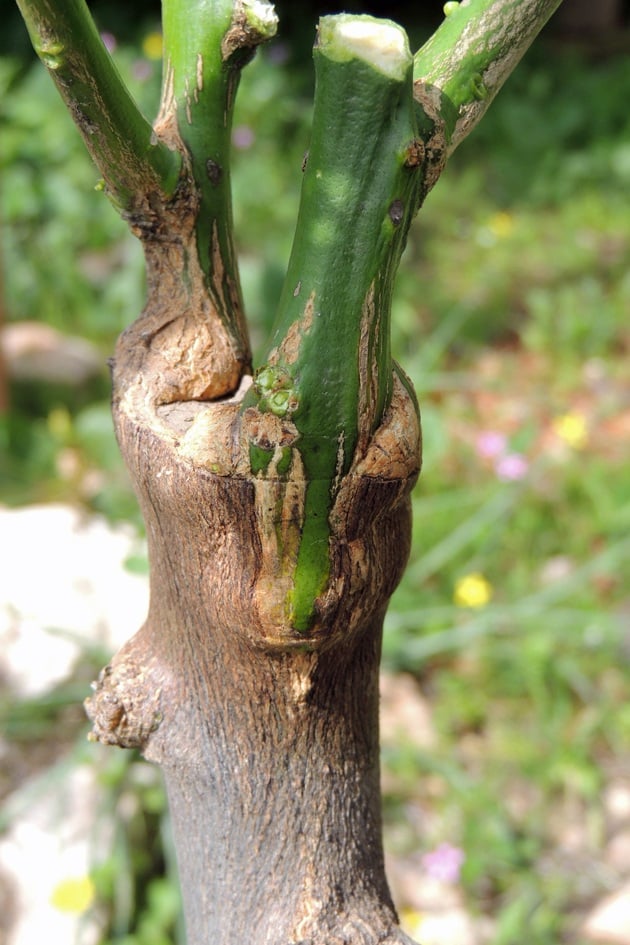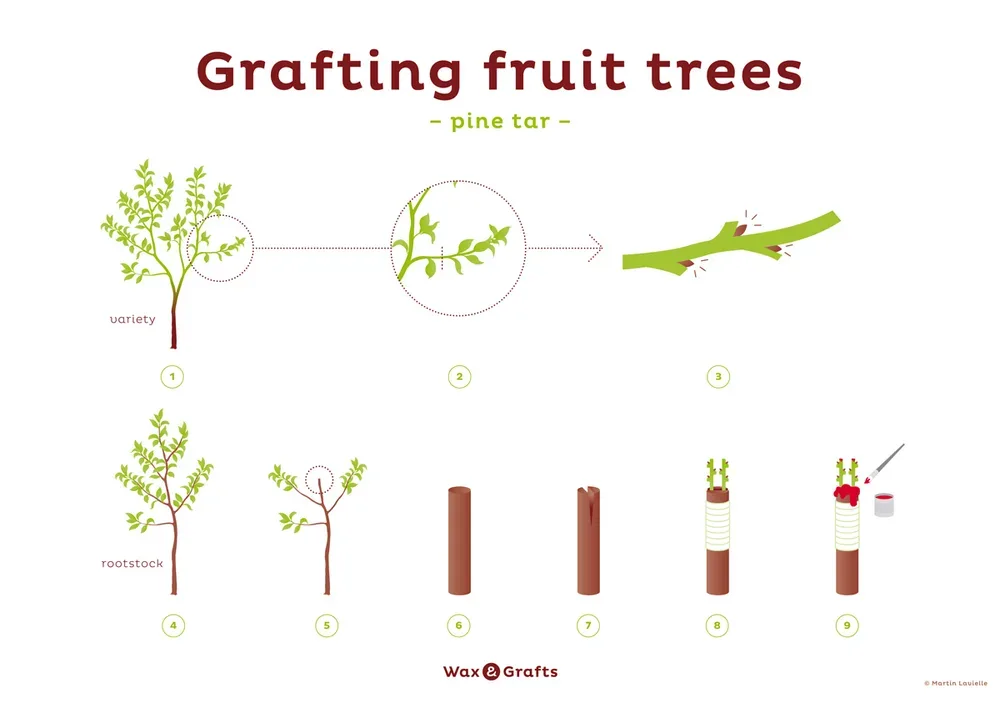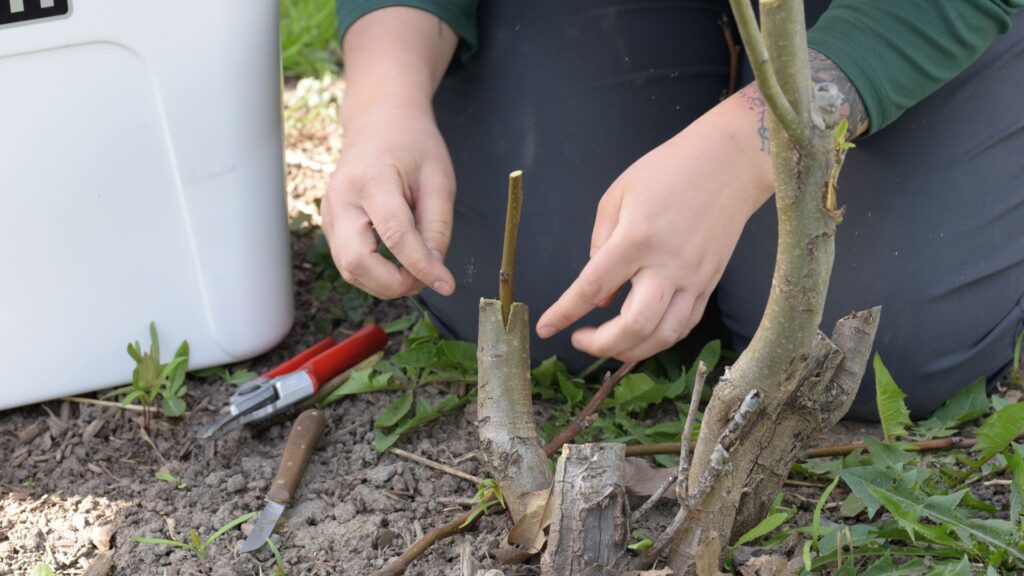Grafting fruit trees is a horticultural practice used to combine desirable traits onto one tree. By joining the tissues of two plants together, new trees can inherit desired characteristics.
This method allows for the production of multiple fruit varieties on a single tree, saving space and improving productivity. Grafting also enables the cultivation of trees that wouldn’t survive on their own root systems in certain conditions. Understanding the different techniques and timing for grafting is essential for successful fruit tree propagation.
Whether you are a seasoned gardener or a beginner looking to expand your horticultural skills, learning the art of grafting fruit trees can be a rewarding and fruitful experience.
Benefits Of Grafting
Grafting fruit trees is a horticultural technique that offers a wide range of benefits. When done correctly, it can significantly improve fruit quality, enhance disease resistance, and even increase the overall productivity of the tree. Let’s take a closer look at the advantages of grafting and how it can positively impact the growth and yield of fruit trees.
Improved Fruit Quality
Grafting plays a vital role in improving the quality of fruit produced by trees. By grafting desirable fruit-bearing branches onto a compatible rootstock, growers can ensure consistent and high-quality fruit production. This method allows for the propagation of fruit varieties that may not thrive on their own roots, resulting in better-tasting and more robust fruit.
Enhanced Disease Resistance
Grafting enables fruit trees to become more resilient to various diseases and environmental stressors. By selecting disease-resistant rootstocks and grafting them with susceptible but high-quality fruit-bearing scions, growers can create trees that are less susceptible to common pests and pathogens. This can lead to a significant reduction in the need for chemical pesticides and fungicides, making the entire process more sustainable and environmentally friendly.

Credit: ladyleeshome.com
Types Of Grafting
Grafting fruit trees involves different types of grafting techniques, including whip and tongue, cleft, and side veneer grafting. These methods allow growers to combine desirable qualities from different tree varieties, resulting in stronger, more productive fruit trees.
Grafting fruit trees is a fascinating technique that allows for the creation of unique fruit varieties. There are several types of grafting methods in horticulture, each serving a specific purpose. Let’s explore three common grafting techniques:Whip And Tongue Grafting
Whip and tongue grafting is a precise technique that involves joining a scion and a rootstock with matching diagonal cuts. The cuts are secured with tape or rubber and allow for a strong and seamless union between the two plant pieces. This method is often used for grafting fruit trees with different sizes and diameters.Bud Grafting
Bud grafting is a method where a single bud from the desired variety is inserted into the rootstock. This technique is commonly used for trees that are difficult to propagate through traditional means. Bud grafting allows for faster healing and growth compared to other methods, making it a popular choice among horticulturists.Cleft Grafting
Cleft grafting involves making a vertical cut in the rootstock and inserting a scion with a matching wedge shape. This method is effective for trees with larger diameters and is known for its high success rate. Cleft grafting is a reliable technique for creating strong and healthy fruit trees with desirable characteristics. By understanding the various types of grafting techniques, horticulturists can effectively propagate and cultivate a wide range of fruit tree varieties. Each method has its own advantages and is chosen based on the specific requirements of the plant being grafted.Preparing For Grafting
Grafting fruit trees is an essential skill for any aspiring orchardist. Before the actual grafting process, thorough preparation is key to ensure successful results. This involves selecting compatible rootstock and scion, as well as gathering the necessary tools and materials.
Selecting Compatible Rootstock And Scion
Choose a rootstock that is compatible with the scion you want to graft. They should be of similar diameter for a better fusion.
Tools And Materials Needed
- Sharp grafting knife
- Grafting tape
- Grafting wax
- Pruning shears
Having the proper tools ready will make the grafting process smoother and more efficient. Ensure all tools are clean and sharp.

Credit: www.thetreecenter.com
Step-by-step Grafting Process
Grafting fruit trees is a fantastic way to create new varieties and propagate favored fruit trees. The step-by-step grafting process involves sterilizing tools, making the graft cut, joining the scion and rootstock, and securing and protecting the graft.
Sterilizing Tools And Preparing The Graft
Before beginning, ensure that all tools are cleaned and sterilized to prevent any infections. Select a healthy scion from a desirable fruit variety and a rootstock with a sturdy, disease-resistant root system.
Making The Graft Cut
Cut both the scion and rootstock at matching angles with a sharp knife, ensuring the cuts are clean and smooth. This will maximize the contact area and promote successful union.
Joining The Scion And Rootstock
Fit the scion into the rootstock, ensuring the cambium layers align perfectly to achieve a successful graft. Use a rubber band or tie tape to bind the two pieces together securely.
Securing And Protecting The Graft
Apply grafting wax to seal the graft junction and protect it from drying out or becoming infected. Monitor the graft regularly and remove any side shoots to direct the energy into the main graft.
Caring For Grafted Fruit Trees
Learn how to care for grafted fruit trees to ensure healthy growth and optimal fruit production. By regular pruning, watering, and fertilizing, you can support the graft union and maintain the tree’s vigor. Protect your grafted fruit trees from pests and diseases to enjoy bountiful harvests for years to come.
Pruning
Pruning is an essential practice when caring for grafted fruit trees. It involves the selective removal of certain parts of the tree to promote its growth and productivity. By removing dead or diseased branches, as well as any excessive growth, pruning helps to maintain the overall health and shape of the tree.
Regular pruning also encourages the development of strong and robust branches, which can support the weight of fruit as it grows. Additionally, it improves air circulation and sunlight penetration into the tree canopy, reducing the risk of pest and disease infestations.
To properly prune your grafted fruit trees, follow these guidelines:
- Prune during the dormant season when the tree is not actively growing. This is typically in late winter or early spring.
- Start by removing any dead, damaged, or crossing branches.
- Thin out the canopy by removing overcrowded branches and any suckers that emerge from below the graft union.
- Trim back branches that are growing too long or out of shape to maintain a balanced and compact tree form.
- Make clean cuts just above a bud or lateral branch, ensuring there are no ragged edges.
- Dispose of the pruned material properly to prevent the spread of pests and diseases.
Pest And Disease Management
Pest and disease management is crucial to protect the health and productivity of grafted fruit trees. Infestations can weaken the tree, reduce fruit quality, and even lead to its demise if left unaddressed. Here are some steps you can take to manage pests and diseases:
- Regular monitoring: Keep an eye out for common pests and diseases that affect fruit trees, such as aphids, mites, apple scab, or powdery mildew. Monitor your trees regularly to detect any signs of infestation or disease.
- Integrated pest management: Adopt an integrated approach to pest control, which combines cultural practices, biological control methods, and targeted chemical treatments only when necessary. This minimizes the use of pesticides and reduces the potential harm to beneficial insects.
- Cultural practices: Maintain good tree hygiene by removing fallen leaves and fruit, as they can harbor pests and disease-causing pathogens. Avoid over-fertilization, as excessive nitrogen can make trees more susceptible to certain pests.
- Biological control: Encourage beneficial insects, such as ladybugs and lacewings, by providing them with suitable habitats and food sources. These natural predators help keep pest populations in check.
- Chemical treatments: If pest or disease pressure becomes significant, consider targeted chemical treatments approved for use on fruit trees. Always follow the instructions and safety precautions provided by the product manufacturer.
Monitoring Graft Union
The graft union, where the scion and rootstock are joined together, requires careful monitoring to ensure the long-term success of grafted fruit trees. This junction is prone to potential issues, such as weak unions or adventitious shoots from the rootstock.
To effectively monitor the graft union, follow these guidelines:
- Regular inspection: Check the graft union periodically, especially during the first few years after grafting. Look for any signs of swelling, cracking, or separation.
- Support for weak unions: If you notice a weak graft union, provide additional support by tying the tree to a stake or using tree support systems. This helps prevent the scion from breaking away from the rootstock.
- Remove adventitious shoots: Sometimes, the rootstock may produce shoots that compete with the scion for nutrients and energy. Promptly remove these shoots to maintain the dominance and vigor of the desired scion.
- Train the tree: As the grafted fruit tree grows, ensure that the main stem remains upright and well-aligned with the graft union. This prevents any major structural issues and encourages the tree to develop a strong and stable framework.

Credit: www.npr.org
Frequently Asked Questions Of Grafting Fruit Trees
What Fruit Trees Can Be Grafted Together?
Apple, pear, plum, and cherry trees can be grafted together to create unique fruit combinations.
What Is The Best Time To Graft Fruit Trees?
The best time to graft fruit trees is during late winter or early spring before new growth begins. This ensures successful grafting and healthy tree development.
How Do You Graft A Tree For Beginners?
To graft a tree, select compatible species, make a clean cut, then secure with grafting tape. Keep the graft site moist and protect from extreme heat. Watch for successful union and gradually remove support. A little practice and patience will help beginners master tree grafting.
Does Grafting Change The Fruit?
Grafting can change the fruit.
Conclusion
Grafting fruit trees is a rewarding skill for any enthusiast. By understanding the techniques and benefits, individuals can improve fruit quality and yield. With patience and practice, even beginners can master the art of grafting. With the right tools and knowledge, anyone can enjoy the satisfaction of growing their own unique fruit tree varieties.


